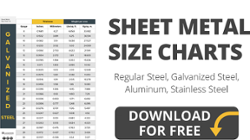Designing for Tech Pub 248: Meeting Military Welding Standards
Military contracts can be highly lucrative, but fabricating parts for the Navy or another branch of the armed forces comes with plenty of upfront work. Not only do you need to meet all professional standards for the location where performing fabrication, but you also need to meet welding standards specific to each job. Here are a few things to consider when designing under Tech Pub 248.
What is Tech Pub 248?
Tech Pub 248 is a document provided by the military detailing all specifications for military fabrication. It covers everything from design and materials to safety requirements while at work. Before any machine shop can bid on a military contract, they must obtain NAVSEA 278/248 certification.
Requirements May Vary
When designing under Tech Pub 248, keep in mind that the requirements may change depending on the parts being manufactured. Items like ship structural surfaces, submarine hulls and P-1 or P-LT piping all require authorization and approval for special welding processes.
Watch for Repairs
Repair welding is another area that may present some problems. It is generally not allowed, unless:
- Any weld defects don't point to an inadequate procedure
- The repair is similar in nature to a repair that would normally be found on production work
- The repair work does not include crack filling, other than crater-cracks
- Only one cycle of repair welding is available
- All results, including the original failure and information about the repair, must be submitted
Read Tech Pub 248, Carefully
Tech Pub 248 is available for general viewing. While any welders performing work under its aegis must have oversight and the required level of certification, it is important to consult the document during the design phase of any project. It lays out which filler materials may be used during which processes and how much filler. It also offers guidance on setting up a safe workspace and how to document testing.
This 144-page document contains plenty of specifics that can help cut down on the amount of back and forth between your production team and your contract administrator. Before beginning work, be sure to send over all of the technical specifications for approval. This ensures deliverables meet approved quality standards.


